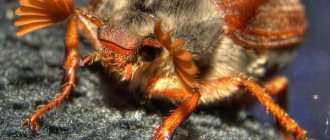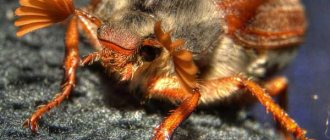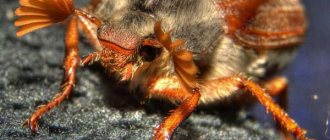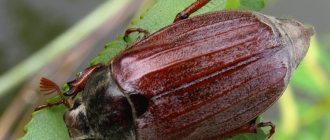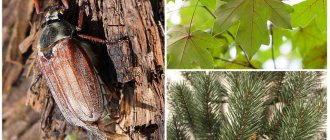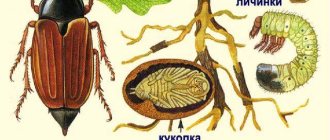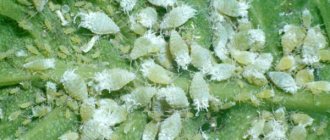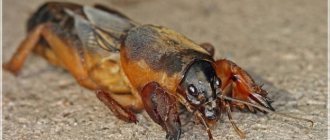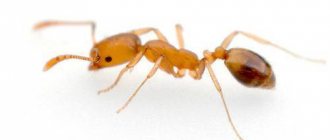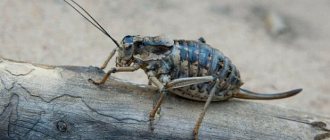At the end of April, when the air finally warms up, the cockchafer, a large and beautiful insect that is one of the most voracious pests, emerges from the ground.
The beetle, whose second name is Khrushchev, flies up to 20 km a day, destroying succulent leaves, ovaries and flowers on its way.
Many different means are used in the fight against insects, but none of them can completely destroy beetles and their larvae.
May beetle (Khrushchev) - characteristics, description, appearance
The May beetle is a representative of the Coleoptera order, the Lamelidae family, and the Khrushchi subfamily.
It flies contrary to the law of aerodynamics, according to which the beetle has too short wings and weak muscles to be able to rise into the air.
However, while scientists are trying to unravel the secret of the unscientific features of the Khrushchev, it calmly flies 2 - 3 meters per second and continues to cause significant damage to forest and garden plantings.
External structure
The May Khrushchev is easy to recognize due to its large size (3–4 cm) and characteristic sound when flying.
Looking at a photo or drawing in a textbook, it becomes clear that its body is oval in shape and covered with small hair scales. The hair on the abdomen and head is longer.
The chitinous shell serves as reliable protection from external influences. In some individuals, the hair is so thick that it hides the real color of the body.
The insect's head has antennae: in females they consist of 6 plates, in males there are 7 such plates.
The beetle's eyes have a facet structure, each eye consisting of several thousand small eyes.
Due to the structural features of the body, the insect cannot turn its head in different directions, but its eyes have a fairly wide angle of vision. The type of mouthparts of the pest is gnawing.
The chest is divided into three sections, each of which has a pair of legs, the insect has a total of six of them. The wings of the Khrushchev are located on the back and middle parts. There are rigid elytra that perform protective functions.
The color of an insect depends on its membership in a particular species. In Russia, two types are most often found: western and eastern.
The first belongs to the thermophilic species and lives mainly in the forest and forest-steppe zones of the European part of the continent. It can be recognized by its black head and pronotum of the same color. His wings are light brown and reddish.
Western beetles eat only green leaves and fruit crops; they do not touch coniferous trees.
The oriental beetle is able to withstand low temperatures, so it can be found in the Urals and Siberia. Its color is much lighter than that of its western counterparts.
The favorite delicacy of the eastern beetle is tender young needles, but the insect does not disdain leafy crops.
Types and photos of the pest
Various types of May beetle inhabit almost all of Europe, Asia Minor, the Caucasus, most of the Siberian taiga and Central Asia, Syria, northern Iran, India, Japan, China, also Tibet, Indochina and the Philippine Islands. The main types of the May beetle are the western May beetle, the eastern May beetle and the Caucasian marbled beetle.
The Western May beetle is a beetle 23-32 mm long with a strong, wide and strongly protruding body. The lower part of the body, head and pronotum are black. The color of the elytra, legs, antennae, palps and posterior part of the abdomen is light brown, red-brown or almost black-brown. This species is characterized by significant color variability and may have a color that is very different from the typical one. They live in most of Europe, in the east in the European part of the CIS.
Western May Khrushchev
The pronotum is dark in color with short gray-yellow hairs. The elytra are curved, elongated oval, with 5 thin ribs, covered with frequent short hairs of white or gray color and scattered longest bristling hairs. The base and sides are covered with sparse long bristling yellowish-gray hairs, the ribs have distinct, rather small points. Chest covered with long, dense white-gray hairs. The posterior section of the abdomen in the male is elongated at the apex into a thin process; in the female it is slightly shorter.
The eastern May beetle or eastern May beetle is similar to the western May beetle, but has some differences from it in color and a number of other characteristics. The body is 20-29 mm long. Females are larger than males. The body is large, elongated-oval, curved forward. Coloring is variable.
The extreme segment of the maxillary palps is elongated and slightly curved. The head is small, retracted into the pronotum and covered with fairly dense punctures, with frequent, long, bristling light yellowish-gray hair. Eyes protruding forward, medium size. The posterior part of the abdomen is very steep, turning into a process at the apex. The posterior section of the abdomen is quite vertical, at the apex it is narrowed into a process, which at the apex is again widened and rounded; in the male it is not very long; in the female it has the same width along the entire length, and sometimes is completely absent.
Eastern cockchafer
There are two subspecies of Oriental Khrushchev:
- Melolontha hippocastani romana - the upper body, together with the pernotum, is covered with frequent white hair-like scales that turn into hairs.
- Melolontha hippocastani mongolica - stands out for its strongest, wide body, short and wide posterior abdomen. Length 19-27 mm.
Caucasian marbled beetle - the body of an adult beetle 30-37.8 mm long; width – 14.2-18.5 mm. Black or brown-black color. There is a yellow pattern on the head and pronotum, and a white scaly pattern on the scutellum and elytra. The color of the antennal club is black-brown.
Internal structure
The internal organs of the cockchafer are well developed. Thanks to this, it adapts perfectly to various environmental conditions, including wintering in the soil.
Digestive system
An adult beetle bites off pieces of leaves with its powerful upper jaw, and crushes them with its lower jaw. Then the crushed food enters the esophagus, and from there into the stomach. Food processed to a pulp state enters the intestines, where it is absorbed.
Respiratory system
The insect breathes through the trachea - a network of branched tubes. Oxygen enters them through small holes - spiracles, which are located at the edges of the dorsal part of the abdomen.
Circulatory system
Khrushchev have an open circulatory system. Blood fills all tissues of insects with oxygen and nutrients, and carries waste products to the excretory organs.
The movement of blood is provided by the heart, which looks like a longitudinal tube.
Nervous system
The nervous system of an arthropod consists of the ventral nerve cord and the peripharyngeal ring. Nerve cells form the brain.
Excretory system
The excretory system of the cockchafer is represented by the so-called Malpighian vessels. These are thin tubes located inside the body.
The products of metabolic reactions are filtered on the surface of these tubes, then turn into crystals and are excreted through the intestines along with undigested food.
Sex organs and reproduction
Females have two ovaries, which pass into the oviducts. The bases of the ovaries merge and form a single oviduct through which the eggs emerge.
The sperm of the male enters a special organ of the female - the spermatic receptacle. They fertilize mature eggs.
The male's reproductive organs are two testes. They pass into the vas deferens, and then into the ejaculatory duct, through which sperm is released.
Sense organs
Well-developed sense organs help the beetle to navigate its environment: smell, vision and touch.
Antennae serve as organs of smell for beetles. They, like antennas of sorts, help insects smell food, for which they can fly up to 1 km.
For touch, they use small palps located on their oral appendages. Beetles use them to feel for food.
May beetle eye
The location and structure of the eyes allows the cockchafer to get a general idea of what is happening around. He distinguishes colors and notices any movement of objects in the immediate vicinity.
Habitat
The cockchafer lives almost everywhere, except in places where there is permafrost. In Russia it is distributed everywhere, including Yakutia.
The eastern species likes to settle in high treetops, while the western species prefers hills and hills to live.
The larva remains underground until the adult hatches: in the spring it moves closer to the roots, and in the winter it goes to a depth of 1 m.
Signs of plant infection
Adult cockchafers in the area damage the above-ground parts of plants, this is very easy to notice: the leaves become full of holes and limp. Damage to the buds prevents flowers and fruits from developing. Leaves lose their ability to photosynthesize and fall off.
The beetle larvae in the ground spoil the tree, gradually destroying its root system. Leaves and shoots lose their elasticity and fall off. The plant can be easily removed from the soil.
Harmful microorganisms enter the plant through damaged roots.
The young plant quickly dies, and the adult plant slows down the growth and formation of ovaries and fruits.
Nutrition
The cockchafer causes great damage to deciduous and mixed forests, fruit and berry crops. It feeds on leaves, flowers, and damages ovaries.
His favorite delicacies are plum, apple, cherry, hazelnut and walnut; he loves oak and birch. The foliage of shrubs also serves as food for the beetle, and pine needles are also suitable for the eastern species. It eats everything suitable for food in one area, then flies to another.
Nurseries especially suffer from beetle infestations, as they can completely gnaw away young seedlings. The only plants that the insect does not eat are lilac and ash.
The larvae damage the roots of young trees, cereals and vegetables, causing the plants to die. These nasty-looking, translucent worms (popularly called “chrobak” or “furrowworm”) are well known to gardeners. If measures are not taken against them in time, they can destroy all seedlings.
What crops does the pest affect?
What the cockchafer larva eats depends on its age:
- The larva of the first year of life can feed on humus (humus) - a mixture of organic substances contained in the soil. Overgrown furrows destroy the roots of herbaceous ground cover plants.
- Overwintered larvae eat everything that comes their way - dead and living roots of various plants, root vegetables. In general, the larvae gnaw the roots of those plants whose green shoots, buds and leaves are preferred by adult pests. From forest flora: oak;
- hazel;
- honeysuckle;
- Rowan;
- alder;
- acacia;
- elm;
- birch;
- maple;
- rose hip.
Eating roots
Among the gardening plants, furrow-growers enjoy the following:
- strawberry;
- strawberries;
- potato;
- Apple tree;
- grape;
- plum;
- beet;
- corn;
- sunflower;
- currant;
- gooseberry.
Both adult insects and larvae prefer coniferous plants:
- pine;
- junipers;
- spruce;
- cedar.
The tender roots of seedlings of flower and garden crops suffer from voracious larvae.
On a note! One grown larva can completely destroy the root system of a two-year-old pine seedling in one day.
Life cycle of Khrushchev
The lifespan of a beetle is almost 5 years, of which the life of an adult beetle is only a few months.
The life cycle of an insect consists of 4 stages:
- Egg.
Females lay a small number of eggs; in fertile and loose soil, almost all of them are preserved and mature. The larva emerges from the embryo after 1 - 1.5 months. This is a white translucent C-shaped worm.
- Larva.
This stage lasts up to 4 years. During that time, the hrobak manages to cause significant harm to agriculture. If in the first year of life it is quite harmless and feeds on plant debris, then from the second and third years it becomes a full-fledged pest, capable of chewing not only the roots of seedlings, but also the roots of seedlings. The larva can grow up to 6 cm in length.
- Pupation.
The insect remains in this stage of development for no longer than 30–45 days. The pupa does not move, does not feed. The developing parts of an adult beetle are visible through the transparent covers.
- Imago (sexually mature individual).
By the end of summer, adults emerge from the pupae. They do not rise to the surface of the earth, but, on the contrary, go deeper and prepare for wintering. In the spring, when the ground warms up well, the beetle emerges from the soil and rushes to the trees. Then the beetles find sexual partners and mate. Females burrow into the soil and lay eggs. After the oviposition process, the beetles die, surviving until at least the beginning of July.
Fighting cockchafer larvae
To get rid of beetle larvae, use the following means:
- "Zemlin";
- "Pochin";
- "Bazudin";
- "Aktara";
- "Anti-Khrushch."
Thanks to the active substance, these drugs penetrate deep into the soil and destroy pests.
There are drugs that attract larvae by smell. They are added to the holes with seedlings. The larva eats the poison and dies. Such drugs include “Rembek”.
The safest remedy for humans is Nematode. This biological preparation destroys up to 90% of larvae in the soil. You can also fight the larvae with folk remedies, the most effective of which is considered to be an infusion of onion peels.
History of world protection
In world practice, to combat soil pests, in addition to hexachlorane, other, no less persistent and soil-polluting, organochlorine insecticides were used.
Thus, in Germany they used a drug based on a mixture of nemafen and methyl isocyanate, which is very poisonous for humans and warm-blooded animals, in England and Hungary - drugs based on primicide, in the USA - terbufos or carbofuran. In Denmark, drugs based on trichloronate or diazinon were used against the western cockchafer.
In New Zealand pastures, the soil was treated against chafer larvae with lindane-based preparations, the toxic effect of which lasted 14–16 weeks.
In Bulgaria, in fields with a large number of soil pests, seeds treated with a preparation based on heptachlor were sown, and the soil was also sprayed with preparations based on endolsulfan, bifenthrin or diazinon.
In Germany, after a massive struggle, the population of cockchafers decreased and there was a lull, but in the 90s the pest became more active again. In orchards, strawberry and asparagus plantations, in the vineyard and in sugar beet crops, they began to fight the cockchafer using a biological method: preparations based on the entomopathogenic fungus Beaveria brongniartii were carried into the soil, but this remedy turned out to be insufficiently effective against the chafer larvae.
In Italy, in apple orchards, granular preparations based on phenophos, chlormephos and chlorpyrifos-ethyl were added to the soil, which were ineffective against beetle larvae.
Interesting facts about the cockchafer
The only benefit from cockchafers, or rather, from their larvae, is that they are excellent for fishing bait. According to fishermen, bream, ide, chub and perch are well caught using larvae.
Khrushchev fly contrary to the laws of physics. Scientists cannot understand how the thin wings lift three times as much weight into the air as they should.
It has also been proven that these insects cannot be knocked off course by any tricks; they still return to their route and are well oriented in the area.
